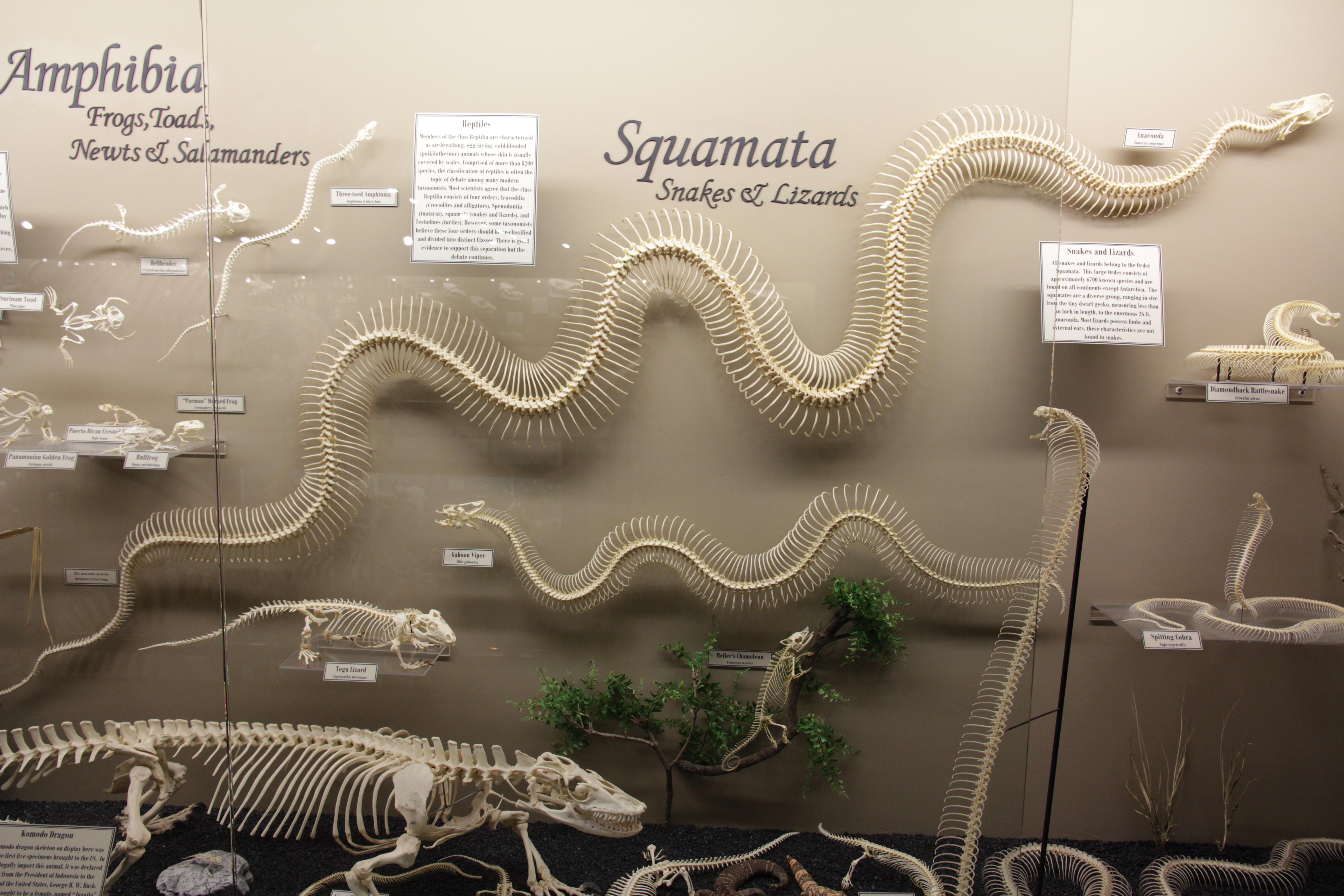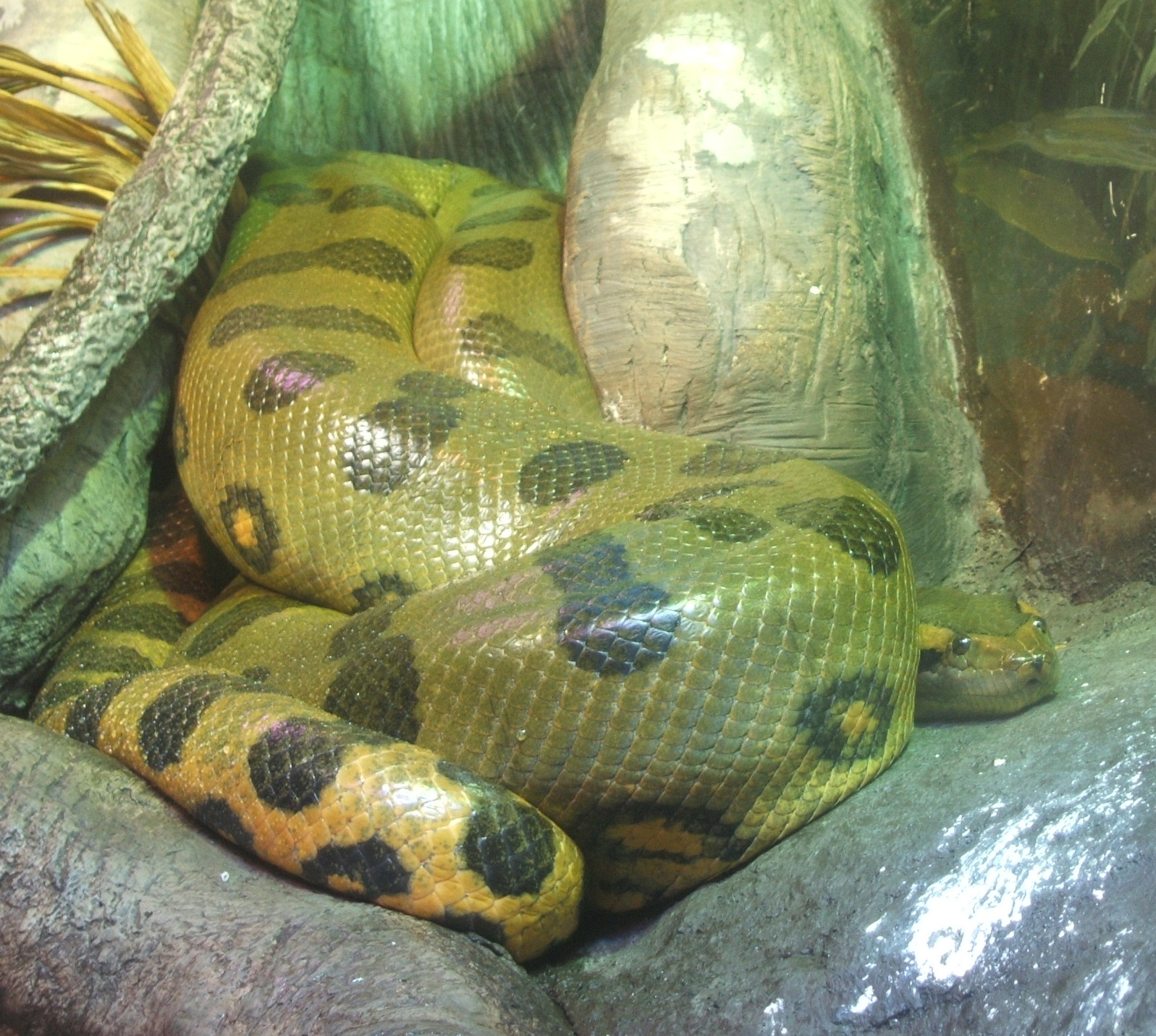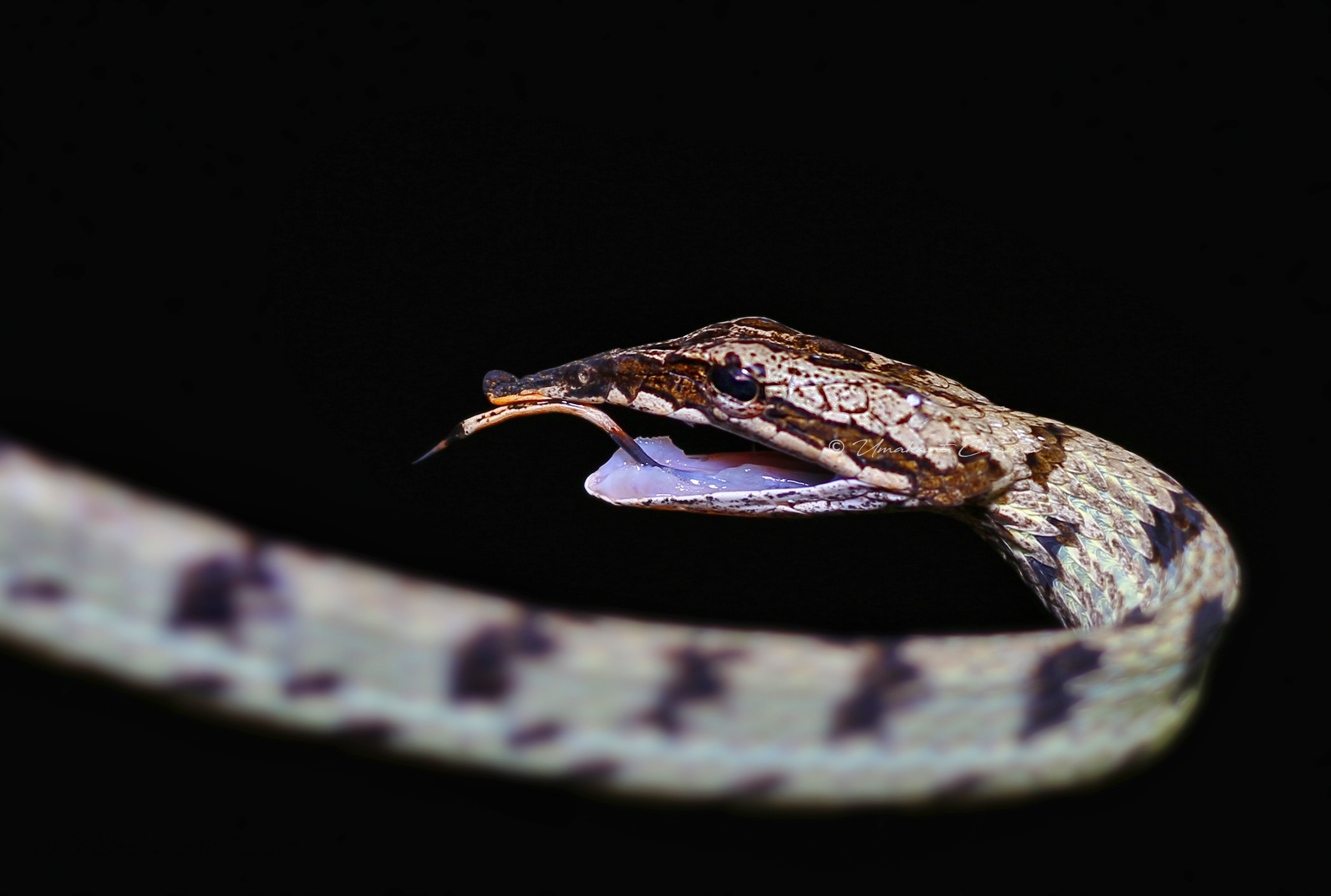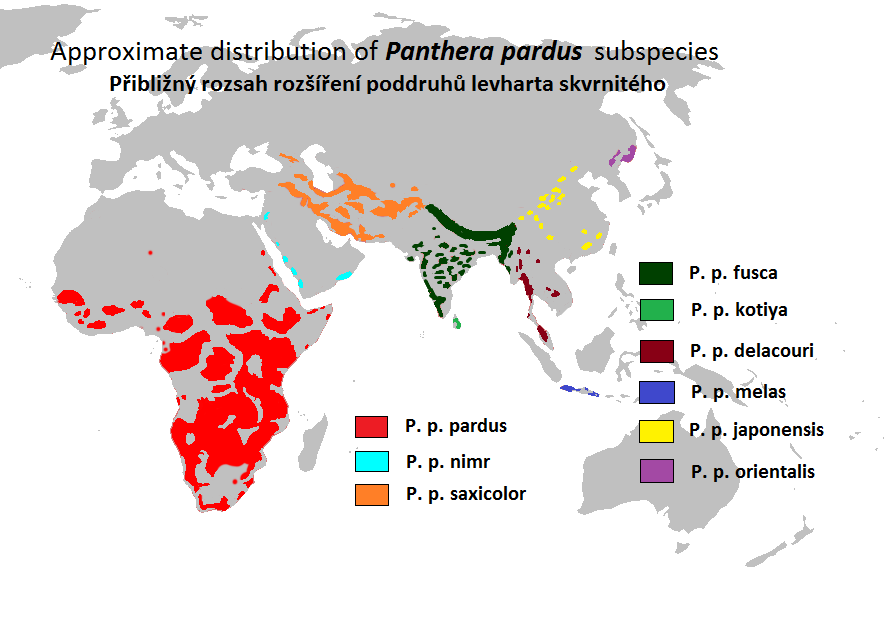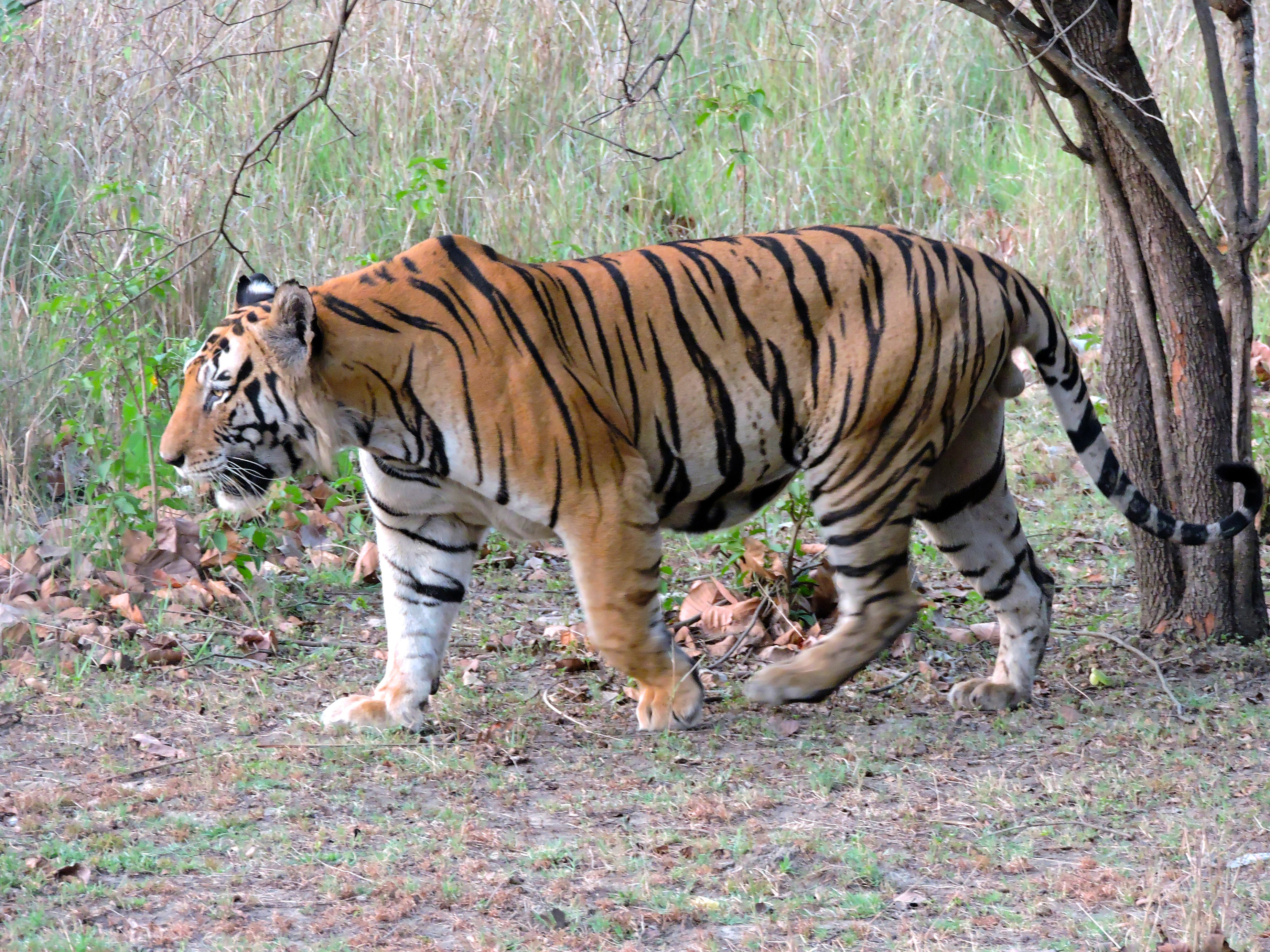|
Anaconda
Anacondas or water boas are a group of large boas of the genus ''Eunectes''. They are a semiaquatic group of snakes found in tropical South America. Three to five extant and one extinct species are currently recognized, including one of the largest snakes in the world, ''E. murinus'', the green anaconda. Description Although the name applies to a group of snakes, it is often used to refer only to one species, in particular, the common or green anaconda (''Eunectes murinus''), which is the largest snake in the world by weight, and the second longest after the reticulated python. Origin The recent fossil record of ''Eunectes'' is relatively sparse compared to other vertebrates and other genera of snakes. The fossil record of this group is effected by an artifact called the Pull of the Recent. Fossils of recent ancestors are not known, so the living species 'pull' the historical range of the genus to the present. Etymology The name ''Eunectes'' is derived from . The So ... [...More Info...] [...Related Items...] OR: [Wikipedia] [Google] [Baidu] |
Green Anaconda
The green anaconda (''Eunectes murinus''), also known as the giant anaconda, emerald anaconda, common anaconda, common water boa, or southern green anaconda, is a semi-aquatic boa species found in South America and the Caribbean island of Trinidad. It is the largest, heaviest, and second longest (after the reticulated python) snake in the world. No subspecies are currently recognized, but there are two different species that have the name of the Green Anaconda which are the Northern Green Anaconda and Southern Green Anaconda. Like all boas, it is a non-venomous constrictor. The term "anaconda" often refers to this species, though the term could also apply to other members of the genus '' Eunectes''. Fossils of the snake date back to the Late Pleistocene in the Gruta do Urso locality. Taxonomy In the famous ''10th edition of Systema Naturae'' of 1758, Carl Linnaeus cited descriptions by Albertus Seba and by Laurens Theodorus Gronovius to erect the distinct species ''murina' ... [...More Info...] [...Related Items...] OR: [Wikipedia] [Google] [Baidu] |
Eunectes Murinus
The green anaconda (''Eunectes murinus''), also known as the giant anaconda, emerald anaconda, common anaconda, common water boa, or southern green anaconda, is a semi-aquatic Boinae, boa species found in South America and the Caribbean island of Trinidad. It is the List of largest snakes, largest, heaviest, and second longest (after the reticulated python) snake in the world. No subspecies are currently recognized, but there are two different species that have the name of the Green Anaconda which are the Northern Green Anaconda and Southern Green Anaconda. Like all boas, it is a venom, non-venomous Constriction, constrictor. The term "anaconda" often refers to this species, though the term could also apply to other members of the genus ''Eunectes''. Fossils of the snake date back to the Late Pleistocene in the Gruta do Urso locality. Taxonomy In the famous ''10th edition of Systema Naturae'' of 1758, Carl Linnaeus cited descriptions by Albertus Seba and by Laurens Theodorus Gr ... [...More Info...] [...Related Items...] OR: [Wikipedia] [Google] [Baidu] |
Anaconda And Squamata Skeletons
Anacondas or water boas are a group of large boas of the genus ''Eunectes''. They are a semiaquatic group of snakes found in tropical South America. Three to five extant and one extinct species are currently recognized, including one of the largest snakes in the world, ''E. murinus'', the green anaconda. Description Although the name applies to a group of snakes, it is often used to refer only to one species, in particular, the common or green anaconda (''Eunectes murinus''), which is the largest snake in the world by weight, and the second longest after the reticulated python. Origin The recent fossil record of ''Eunectes'' is relatively sparse compared to other vertebrates and other genera of snakes. The fossil record of this group is effected by an artifact called the Pull of the Recent. Fossils of recent ancestors are not known, so the living species 'pull' the historical range of the genus to the present. Etymology The name ''Eunectes'' is derived from . The Sout ... [...More Info...] [...Related Items...] OR: [Wikipedia] [Google] [Baidu] |
Reticulated Python
The reticulated python (''Malayopython reticulatus'') is a Pythonidae, python species native to South Asia, South and Southeast Asia. It is the world's List of largest snakes, longest snake, and the list of largest snakes, third heaviest snake. It is a non-venomous Constriction, constrictor and an excellent swimmer that has been reported far out at sea. It has colonized many small islands within its range. Because of its wide distribution, it is listed as least concern on the IUCN Red List. In several countries in its range, it is hunted for its skin, for use in traditional medicine, and for sale as pets. Due to this, it is one of the most economically important reptiles worldwide. In very rare cases, reticulated pythons killed and swallowed adult humans. Taxonomy The reticulated python was first described in 1801 by German naturalist Johann Gottlob Theaenus Schneider, who described two zoological specimens held by the Göttingen Museum in 1801 that differed slightly in colour and ... [...More Info...] [...Related Items...] OR: [Wikipedia] [Google] [Baidu] |
Ahaetulla Pulverulenta
Brown-speckled whipsnake or brown vine snake (''Ahaetulla pulverulenta'') is a species of colubrid vine snake Endemism, endemic to Sri Lanka. Etymology It is known as හෙනකදයා (''henakadaya'') in Sinhalese language, Sinhala; this name provided the name anaconda. The species name ''pulverulenta'' is from Latin, named after its ashy or dusty grayish brown coloration. Taxonomy It belongs to the genus ''Ahaetulla'', one of five genera within the subfamily Ahaetuliinae. The relationships of ''Ahaetulla pulverulenta'' to some other ''Ahaetulla'' species, and to the other genera within Ahaetuliinae, can be shown in the cladogram below, with possible paraphyletic species noted: Distribution and habitat It is found exclusively in Sri Lanka. Populations in the Western Ghats of India are now considered a separate species, ''Ahaetulla sahyadrensis''. It lives in forests and is fully arboreal. Description It is grayish-brown colored, with darker blackish spots above. It h ... [...More Info...] [...Related Items...] OR: [Wikipedia] [Google] [Baidu] |
Tamil Language
Tamil (, , , also written as ''Tamizhil'' according to linguistic pronunciation) is a Dravidian language natively spoken by the Tamil people of South Asia. It is one of the longest-surviving classical languages in the world,. "Tamil is one of the two longest-surviving classical languages in India" (p. 7). attested since 300 BC, 300 BCE.: "...the most acceptable periodisation which has so far been suggested for the development of Tamil writing seems to me to be that of A Chidambaranatha Chettiar (1907–1967): 1. Sangam Literature – 200BC to AD 200; 2. Post Sangam literature – AD 200 – AD 600; 3. Early Medieval literature – AD 600 to AD 1200; 4. Later Medieval literature – AD 1200 to AD 1800; 5. Pre-Modern literature – AD 1800 to 1900" at p. 610 Tamil was the lingua franca for early maritime traders in South India, with Tamil inscriptions found outside of the Indian subcontinent, such as Indonesia, Thailand, and Egypt. The language has a well-documented history wit ... [...More Info...] [...Related Items...] OR: [Wikipedia] [Google] [Baidu] |
Henry Yule
Colonel (United Kingdom), Colonel Sir Henry Yule (1 May 1820 – 30 December 1889) was a Scottish Oriental studies, Orientalist and geographer. He published many travel books, including translations of the work of Marco Polo and ''Mirabilia'' by the 14th-century Dominican Order, Dominican Friar Jordan Catala, Jordanus. He was also the compiler of a dictionary of Anglo-Indian terms, the ''Hobson-Jobson'', with Arthur Coke Burnell. Early life Henry Yule was born at Inveresk near Edinburgh in Scotland on 1 May 1820. He was the youngest son of Major William Yule (1764–1839) and his wife Elizabeth Paterson (died circa 1827). William Yule had served as an officer in Bengal Army#Under East India Company, the Bengal army of the East India Company and had retired in 1806. William's uncle was the botanist John Yule (botanist), John Yule FRSE. Elizabeth died before Henry was eight and William moved to Edinburgh with his sons, where Henry attended the Royal High School, Edinburgh, ... [...More Info...] [...Related Items...] OR: [Wikipedia] [Google] [Baidu] |
Hobson-Jobson
''Hobson-Jobson: A Glossary of Colloquial Anglo-Indian Words and Phrases, and of Kindred Terms, Etymological, Historical, Geographical and Discursive'' is a historical dictionary of Anglo-Indian words and terms from Indian languages which came into use during British rule in India. It was written by Sir Henry Yule and Arthur Coke Burnell and first published in 1886. Burnell died before the work was finished, and most of it was completed by Yule, who acknowledged Burnell's detailed contributions. A subsequent edition was edited by William Crooke in 1903, with extra quotations and an index added. The first and second editions are collector's items; the second edition is widely available in facsimile. The dictionary holds over 2,000 entries, generally with citations from literary sources, some of which date to the first European contact with the Indian subcontinent, frequently in other non-English European languages. Most entries also have etymological notes. Background The p ... [...More Info...] [...Related Items...] OR: [Wikipedia] [Google] [Baidu] |
Leopard
The leopard (''Panthera pardus'') is one of the five extant cat species in the genus ''Panthera''. It has a pale yellowish to dark golden fur with dark spots grouped in rosettes. Its body is slender and muscular reaching a length of with a long tail and a shoulder height of . Males typically weigh , and females . The leopard was first described in 1758, and several subspecies were proposed in the 19th and 20th centuries. Today, eight subspecies are recognised in its wide range in Africa and Asia. It initially evolved in Africa during the Early Pleistocene, before migrating into Eurasia around the Early–Middle Pleistocene transition. Leopards were formerly present across Europe, but became extinct in the region at around the end of the Late Pleistocene-early Holocene. The leopard is adapted to a variety of habitats ranging from rainforest to steppe, including arid and montane areas. It is an opportunistic predator, hunting mostly ungulates and primates. It relies on it ... [...More Info...] [...Related Items...] OR: [Wikipedia] [Google] [Baidu] |
Tiger
The tiger (''Panthera tigris'') is a large Felidae, cat and a member of the genus ''Panthera'' native to Asia. It has a powerful, muscular body with a large head and paws, a long tail and orange fur with black, mostly vertical stripes. It is traditionally classified into nine Holocene, recent subspecies, though some recognise only two subspecies, mainland Asian tigers and the island tigers of the Sunda Islands. Throughout the tiger's range, it inhabits mainly forests, from coniferous and temperate broadleaf and mixed forests in the Russian Far East and Northeast China to tropical and subtropical moist broadleaf forests on the Indian subcontinent and Southeast Asia. The tiger is an apex predator and preys mainly on ungulates, which it takes by ambush. It lives a mostly solitary life and occupies home ranges, defending these from individuals of the same sex. The range of a male tiger overlaps with that of multiple females with whom he mates. Females give birth to usually two or ... [...More Info...] [...Related Items...] OR: [Wikipedia] [Google] [Baidu] |

